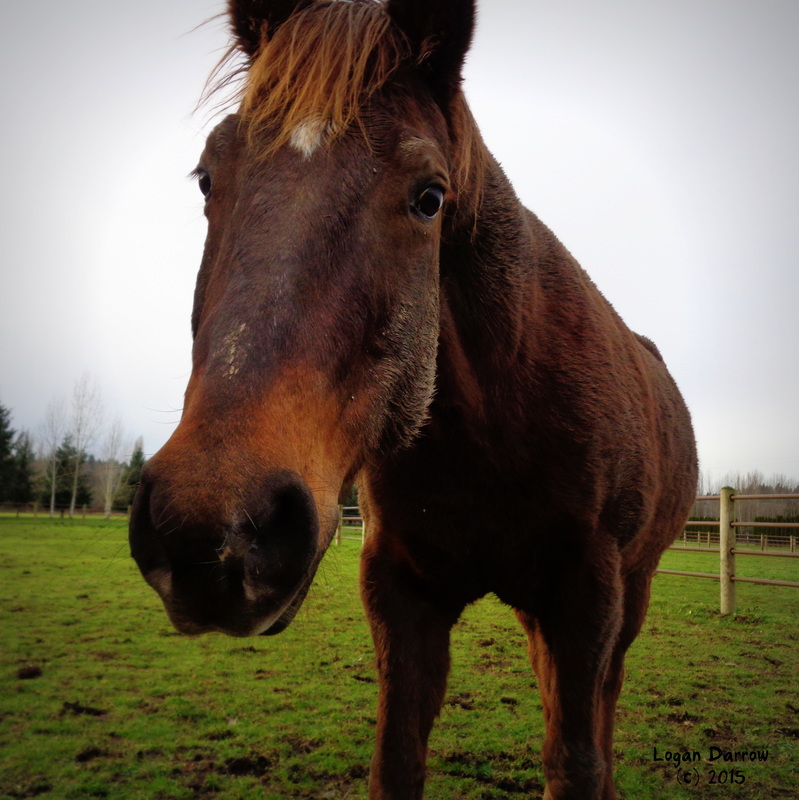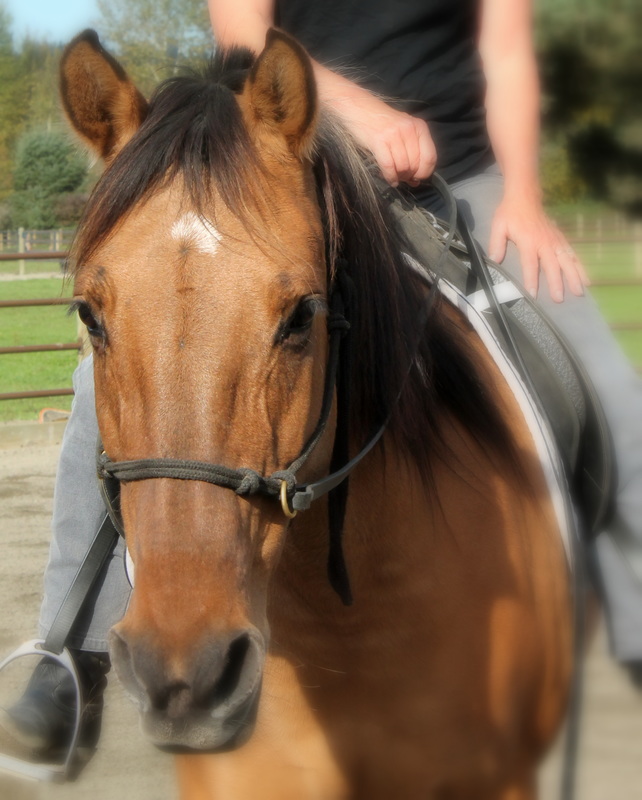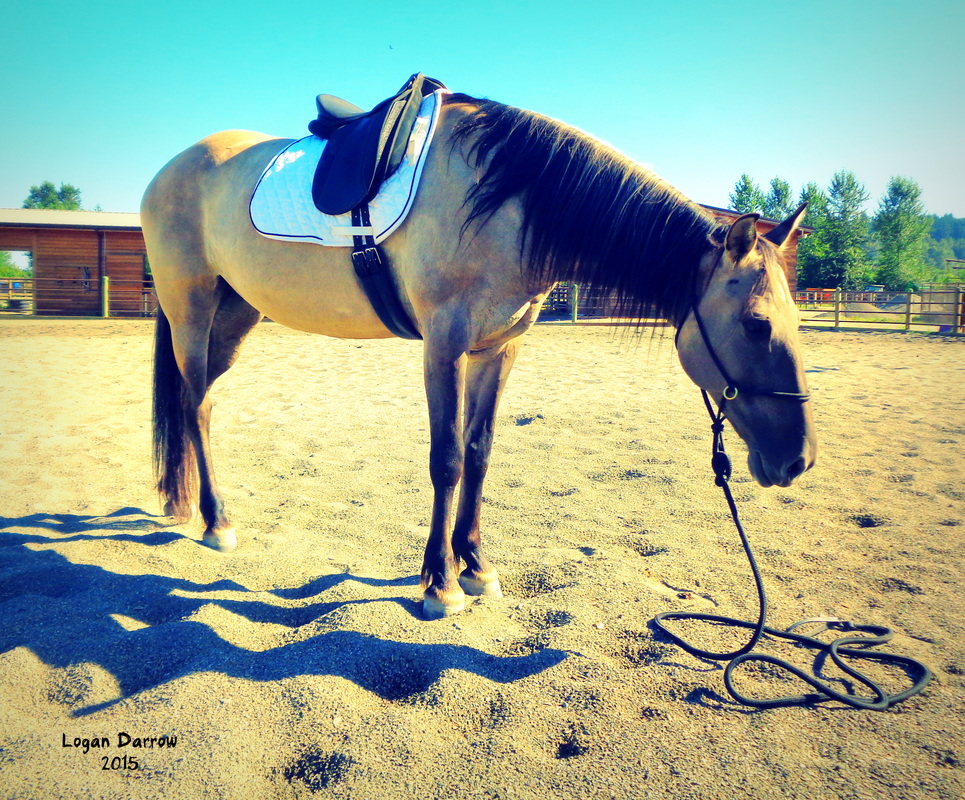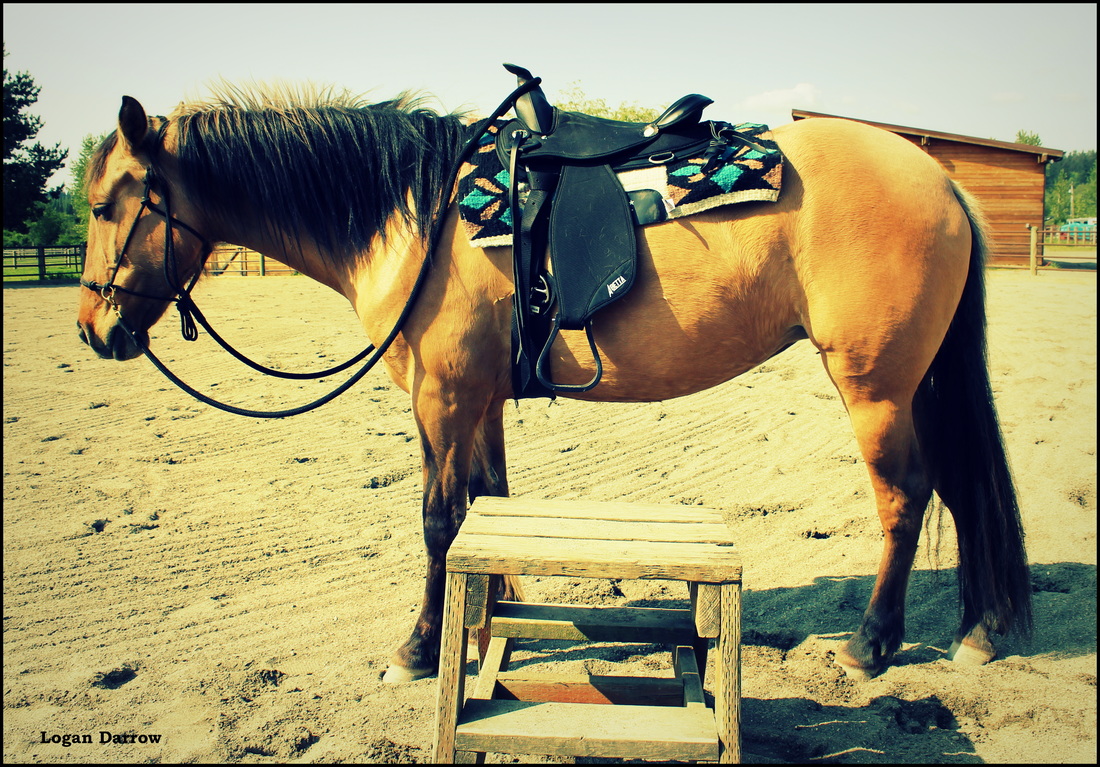Guest blogger Lysette Marie joins forces with trailer loading expert Katie Richards to show us the best way to teach a horse to load into a trailer.A few weeks ago, while on a trip to the UK, I was lucky enough to be able to watch my British friend Katie Richards teach a horse to load onto a trailer. It was a rainy afternoon, and I sat in the front seat of the car snapping photos of Katie working with the horse, while our friend Lysette Marie took detailed notes. There are few things more distressing than several people trying to force a terrified horse onto a trailer using whips and ropes. THERE IS A BETTER WAY! The best part of watching Katie teach a horse to load was her excellent narrative of what was happening literally at every step. Lysette has turned her notes into an excellent and informative description of Katie's kind, thoughtful and EFFECTIVE methods, and has kindly allowed me to publish them here on my blog. "My Horse Won't Load" by Lysette Marie photos by Logan Darrow No matter what discipline you ride, which breed of horse you deal with, chances are that you probably know of a horse that won’t load. Whatever the reasons behind this behavior, most horse owners will agree that this is a frustrating and somewhat enigmatic issue that has disrupted and sometimes even cancelled their plans. Note that I say ‘most’ horse owners; because believe it or not, there are some people out there who actively embrace this issue and glean a sense of enjoyment from solving it! Katie Richards of Cornwall Performance Horsemanship is based in Penzance, Cornwall. She is a freelance horse trainer who has hosted her own horsemanship clinics and clinics for other trainers with a similar philosophy, such as Warwick Schiller.Katie says “The techniques I use help the horse to reach a point where he feels safe to think, not react.”. Being that trailer loading is her specialty, it was Katie I went to when I wanted to learn how to fix loading problems- this article is a depiction of what I learned from her one rainy afternoon. Katie Richards Katie’s subject was Rocco, a very nicely put together 2yo Belgian WB X, who was due to be moved to a different stable that afternoon. After a brief groundwork session, it became clear that he was a well minded individual with whom his owner Fay Panter had done an excellent job, aside from a few small but significant issues, and it was those significant issues that were exacerbating his trailer loading problem. Katie spent the first 20 minutes establishing the basics such as personal space and yielding to pressure ; this got Rocco’s brain engaged and taught him that whatever Katie was asking of him, he could find a ‘sweet spot’. This is because the ultimate aim was for him to view the trailer as the sweet spot, however this wouldn’t happen if Rocco didn’t realise he could search for a sweet spot in the first place. Once this was established, we brought the trailer into the equation… As you can see, Rocco was initially suspicious yet curious. Though not convinced he could put his front feet on the ramp, his head was frequently lowered towards the ramp and he gave it a sniff. Katie stood still, allowing him to weigh everything up. When Katie adjusted her posture slightly, Rocco spooked at the noise her feet made on the ramp- her solution to this was to stamp and jump on the ramp until he became comfortable with it and realised it wasn’t going to kill him. This also meant that when he decided he was comfortable enough to place his own foot on the ramp, he wouldn’t be spooked by the noise and so he would be adequately prepared to take that next step. When Katie applied more pressure to the rope, Rocco braced on the rope and decided he’d rather move his feet and be elsewhere besides the trailer. Seeing as he wanted to move his feet away from the trailer, Katie allowed him to do just that by going along with him keeping tension on the rope and got him really moving before offering him a rest spot back at the trailer, which he gladly took. He did this once more, Katie consistently took the same approach as previous and once again, Rocco figured that the rest spot was at the trailer. “My consistency makes me reliable, consistency makes me a known entity.” Katie Richards After a few minutes to process what had happened having learned the consequence of leaving the sweet spot, Rocco was now willing to place one foot on the ramp. After allowing him a period of time to process what he’d just learned, Katie increased tension on the rope just as she’d done the previous time- this time Rocco knew the answer and braced slightly, lifting his foot off the ramp, but then decided to give to the pressure and placed his foot back down. Katie stressed the importance of timing in horsemanship, explaining that she had waited for him to fully pull away from her before correcting him because “you have to give them a chance to change their mind”. Soon after this, Katie began to ask more of Rocco by shortening the rest times and Rocco responded by placing his other front foot on the ramp then taking it off repeatedly. He then began to show some resistance by leaning against Katie’s feel on the rope, which Katie explained was akin to the darkest hour before dawn. "Often when you’re about to get a real breakthrough you get a bit of resistance. He’s going through some real inner turmoil right now about the decision he’s about to make." Rocco demonstrated this by defecating on the ramp while continuing to lean. Katie reminded us at this point “mental stamina is built up over time, this horse is only 2 years old and hasn’t walked on anything besides grass yet here we are asking him to walk onto a metal ramp; he simply hasn’t had the time to build up that mental stamina just yet.” She was very clear that at this moment in time, the goal was to get him comfortable with standing on the ramp rather than to get him loaded. Katie on taking your time: “The horse is allowed to have time to recollect. Horses need to be shown they can go through adversity and come out the other side, so it’s important to support them through that adversity.” Rocco had shut down slightly during his mulling over of his next move in that he had stopped blinking and appeared to stall, so Katie bumped the rope gently to get his focus back on her which was enough to get him ‘back in the room’ and was rewarded with a step with a hind leg so that it was resting on the ramp. Katie then moved to the side to insure she wasn’t blocking Roccos entry to the trailer. We seemed to be stuck like this for a while, so Fay suggested letting down the side ramp. Katie rejected this offer by saying “personally I would love all side doors to be welded shut. If you let the side door down, you are providing the horse with an exit. You are saying to him “I am putting you in here in order to take you back out”. If you promise that exit then shut it, you’ve trapped him which is what a predator would do. You’ve lied to him.” Often this half way point is where a lot of people lose their patience and accuse the horse of “taking the piss”, resorting to lunge whips, lunge lines around the horses backside and though this may sometimes work, it doesn’t get to the root of the problem. It might help you win multiple battles, but you’ll never win the war. Horses zone out when they’re neither on or off the trailer because they’ve figured that pulling away from the trailer doesn’t get them anywhere, but they’re still not totally convinced that being ON the trailer is any better. This is why it’s important to continue being consistent, so that the horse will find it in himself to choose the trailer and can then learn that the trailer is a safe place for him, meaning he will choose to go on voluntarily next time. After a few minutes with Katie keeping a constant feel on the rope and Rocco's front feet firmly on the ramp with a hind leg trembling while resting the fetlock on the ramp, Rocco gave to the tension on the rope and took a step forward so that all four feet were now on the ramp. After this, things seemed to progress very quickly with Katie now doing very little to influence Rocco's thought process so that he could make the decision to load himself… After some slight hesitation, Rocco bit the bullet and loaded himself! However, it wasn’t just Rocco who made the mental change in his attitude towards trailer loading…
Once he was on board, Fay said “I can’t take him now, can I? He’s just done all that work and got comfortable on there and now I’m going to throw the ramp up and undo everything you’ve just done with him”! The decision was made for Katie to come out another day and do another session with Rocco to insure that he was truly comfortable on the trailer. This was a fantastic decision on Fays part because it showed she’d truly taken in every word Katie said and had gained understanding and empathy for her horse. Fay’s decision epitomized the majority of horse problems- often it’s not the horse who needs to make the mental change, it’s the human on the end of the rope. Thanks to Fay Panter and Rocco, Katie Richards (contact her on facebook at Cornwall Performance Horsemanship) and Logan Darrow for the photos (she is The Mindful Horsewoman on facebook). If you liked this article, you can find many more like it on my facebook page The Candid Quarter Bug.
2 Comments
nansi
7/29/2018 09:53:35 am
Just a random thought.
Reply
Logan
7/30/2018 04:29:06 pm
Hi Nansi,
Reply
Your comment will be posted after it is approved.
Leave a Reply. |
Your email address will be kept private.
Email me directly at
[email protected] 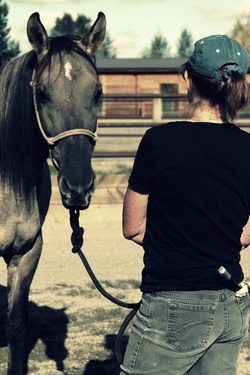
Archives
September 2018
Categories
All
|
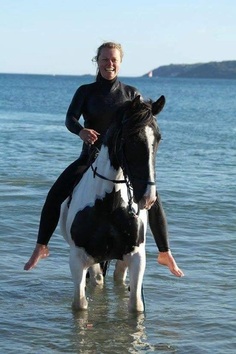
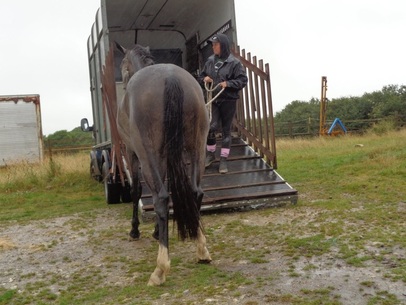
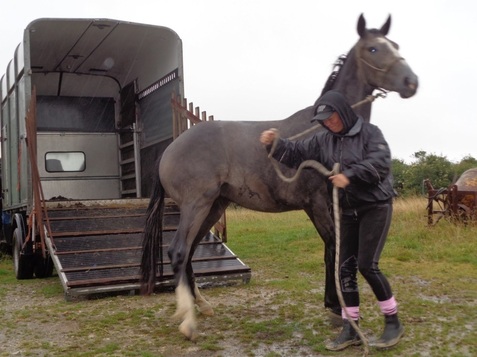
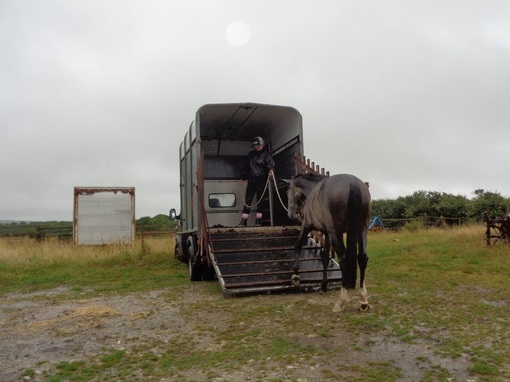
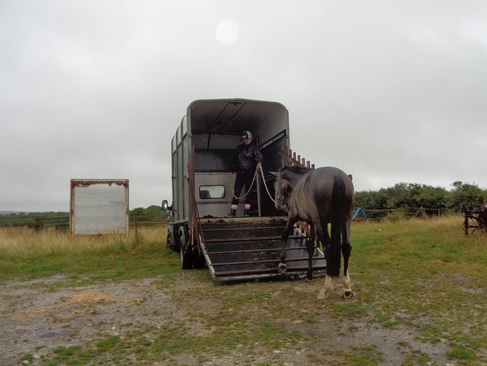

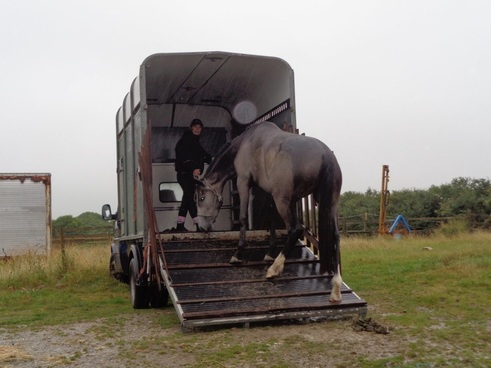
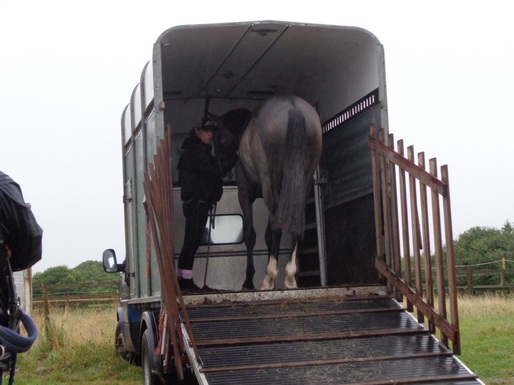
 RSS Feed
RSS Feed

